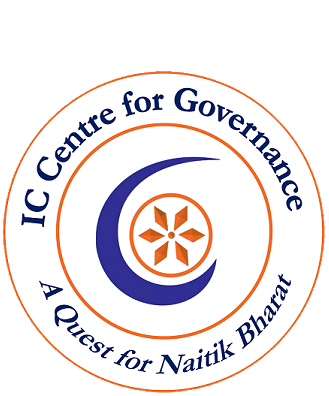THE DEPRECIATING RUPEE: WHAT DO WE NEED TO DO?
1. Introduction
In September 1962, when I travelled to the United States for the first time as a young boy to pursue higher studies at the University of Florida, the exchange rate between the US Dollar and the Indian Rupee was: USD 1= INR 4.76. Roughly sixty years later, on July5, 2022, the exchange rate between the two currencies was: USD 1 = INR 79.36. Which means that the Indian Rupee which was worth 21 cents in September 1962, is worth a mere 1.26 cents now.This means a massive depreciation of the Indian Rupee against the US Dollar.
With the US Dollar becoming more expensive, goods and services denominated in USD become more expensive in Indian Rupees. Crude oil is one example. Education in the United States is another. External debt is still another example.
The Economic Survey 2021-2022 has reported data on the Central Government’s outstanding external debt, based on both the historical and current exchange rates, for each of the years from 2012-13 to 2021-22 (BE). While the Central Government’s external debtat historical exchange rates has risen from Rs. 1,77,289 crore in 2012-13 to Rs. 4,27,925 crore in 2021-22 (BE), that at the current exchange rates has risen from Rs. 3,32,004 crore in 2012-13 to Rs. 6,58,665 crore in 2021-22 (BE). The difference between the Central Government’s external debt at the historical exchange rates and that at the current exchange rates has ranged between Rs. 1,54,715 crore in 2012-13 and Rs. 2,45,532 crore in 2019-20.
The above data clearly suggest that when it comes to repaying the external debt, the Rupees that the Central Government needs to mobilize in order to repay the principal amount of the debt, substantially exceed the Rupees it received at the time it got the debt. This happens because of the depreciation of the Indian Rupee. And it is the Indian taxpayer who ultimately bears this additional burden.
It is not just the Central Government which has outstanding external debt, others do too. The private corporate sector borrows a lot. There have been cases when the depreciation of the Rupee created huge repayment problems for some of the companies in the private sector. Public enterprises also resort to external borrowings. All this suggests that if the losses suffered by the rest of the economy are included, the figure for a given year would be much higher.
2. But Why Does The Indian Rupee Depreciate?
The answer is very simple: if inflation has been higher in India than in its important markets, it is but natural that this loss in the Rupee’s domestic purchasing power should get reflected in a lower exchange rate.
As things stand today, the value of our imports of merchandise exceeds the value of our exports of merchandise. This results in trade deficit. Our receipts on account of net invisibles help meet a good part of this deficit, but we still end up with a current account deficit in most years.
We have been financing these currents account deficits out of funds which we get through various capital inflows, including foreign direct investments, foreign portfolio investments and external borrowings.
3. What Do We Need To Do?
We don’t have to keep on financing our current account deficits in this manner. We have the option of financing our imports of goods and services through the receipts from our exports of goods and services, and even generate a surplus.
But in order to achieve this outcome, we need to control inflation and focus on promoting our exports. Given that our share in world exports is very low – 1.7% in merchandise exports and 3.5% in commercial service exports -- this suggests a huge potential for promoting our exports. Whatever we do in this area, will also help us in achieving a higher rate of GDP growth and in generating additional gainful employment opportunities, as also in substantially reducing our external vulnerability.
4. IS THIS DOABLE?
Of course, it’s doable. We have the requisite resources. What we need are the right policies and their effective implementation. We must set annual targets for our exports and keep on identifying new products that we may export, as also new markets. We must also develop the theory of change underlying our aim to promote exports and articulate the various causal links between the policy interventions that we may launch and their intended outcomes.
- Anand P Gupta, Former Professor of Economics, Indian Institute of Management, Ahmedabad
